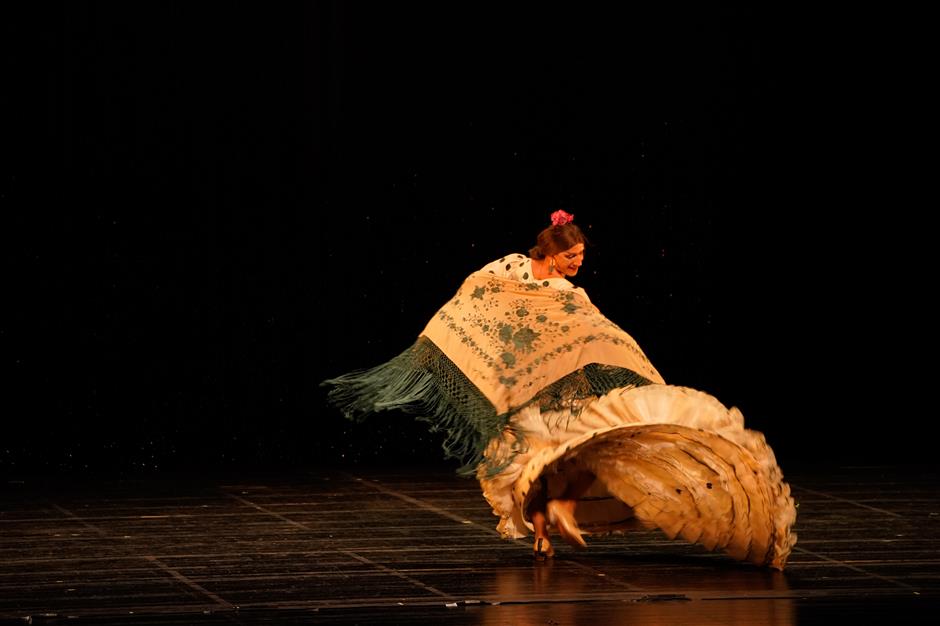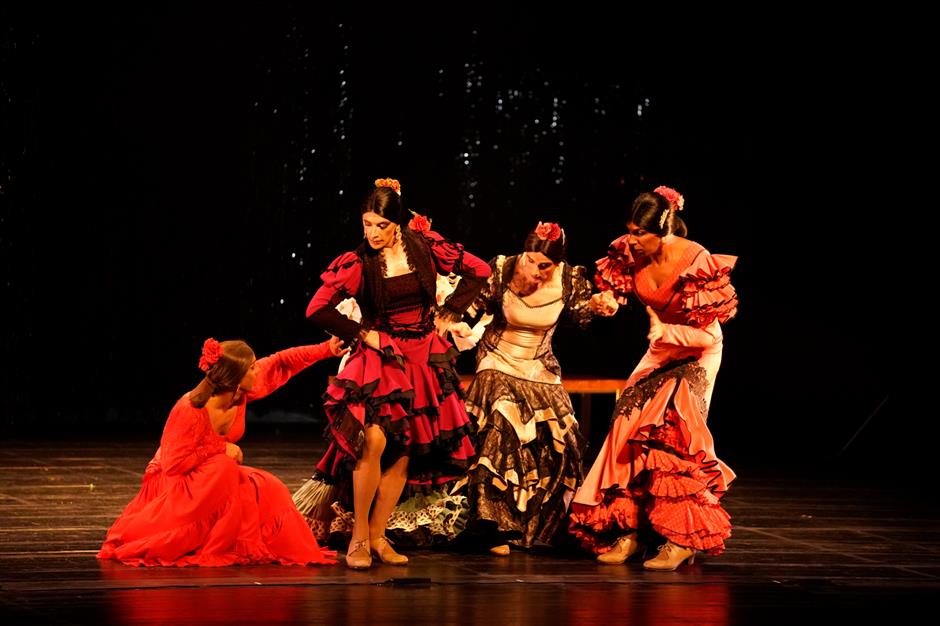All-male flamenco troupe in step with the times
Edited by Ma Yue. Reported by Ma Yue. Subtitles by Ma Yue.
Dancer and choreographer Manuel Liñán's self-directed show "VIVA!" made its Asian debut at the Shanghai International Dance Center Theater this week.
The seven male flamenco dancers used their passion and graceful dance steps to show Shanghai audience another side of the Spanish traditional dance.
"Traditionally, flamenco has different movements for male and female dancers," Liñán told Shanghai Daily. "My company is the only company that presents traditional flamenco with all male dancers. It's also an innovative way to demonstrate the traditional dance genre. There are no gender restrictions here, but free expression."
Liñán said the creative intention of this work originated from his childhood. He was attracted to flamenco and started learning the dance at the age of five. Meanwhile, he found himself enjoy performing in female dancer's dressing and costumes.

Manuel Liñán dances in a traditional flamenco dress.
However, he grew up in circumstances where social and artistic rules imposed in ways that he had to manifest himself according to his gender.
The creation of "VIVA!" can be described as a cry for the freedom of transformation, which does not always imply a way of masking, but rather nudity.
That's why at the ending part of the show, the dancers get rid of their cumbersome dresses on stage. They remove their make-up to greet the audience in their most authentic look.
"Dancers have to wear costumes, accessories and make-up to achieve artistic expression," said Liñán.
"And the process of removing the make-up is our way to say that no matter what we wear and how we look, we are equal and true individuals who can express ourselves freely."
"VIVA!" doesn't have a storyline. Each dancer has his own dance postures, styles, and ways of expressing emotions. Theater goers can even spot ballet elements and some humorous designs.
Liñán said the dancers of his company share similar understanding about flamenco and how it should be presented.

"VIVA!" breaks gender roles in traditional flamenco.
"The age of our company members ranges from 20 to 50," he said. "Flamenco is a kind of dance you can perform and enjoy at any age."
He added, "We all love dancing with these exquisite traditional costumes and headwear, though it usually takes one-and-a-half hours for me to get ready before a show, and the shoes are really heavy. But I do enjoy the process."
"VIVA!" has been performed in various occasions and festivals since its premiere five years ago.
"Most audiences liked it, and it has received important awards from Spanish festivals. There are also some controversial discussions, but I think artistic expression has no boundaries," said Liñán.
Born in Granada, Liñán has a bullfighter father, while his maternal aunt is a flamenco singer. He studied with the legendary Manolete and Mario Maya, and was invited to choreograph shows for the National Ballet of Spain and the New Spanish Ballet. In 2008, he began his solo career. He was the winner of the 2017 Spanish National Dance Award.
As a flamenco teacher, Liñán has received Chinese students both in Shanghai and in Madrid.

"VIVA!" made Asian debut with two performances in Shanghai.
"I noticed that a lot of Chinese people showed strong interest in flamenco," he said. "That's why I was very much expecting to see Chinese audience's feedback when 'VIVA!' is performed."
The two "VIVA!" performances won rounds of applause from audiences at the Dance Center Theater.
"This is definitely different from the previous flamenco shows I have watched," an audience member Yu Hui told Shanghai Daily.
"I imaged that male dancers would have power advantage when dancing flamenco. But this is not an imitation of female dancers, but a personalized expression filled with passion and perseverance."















